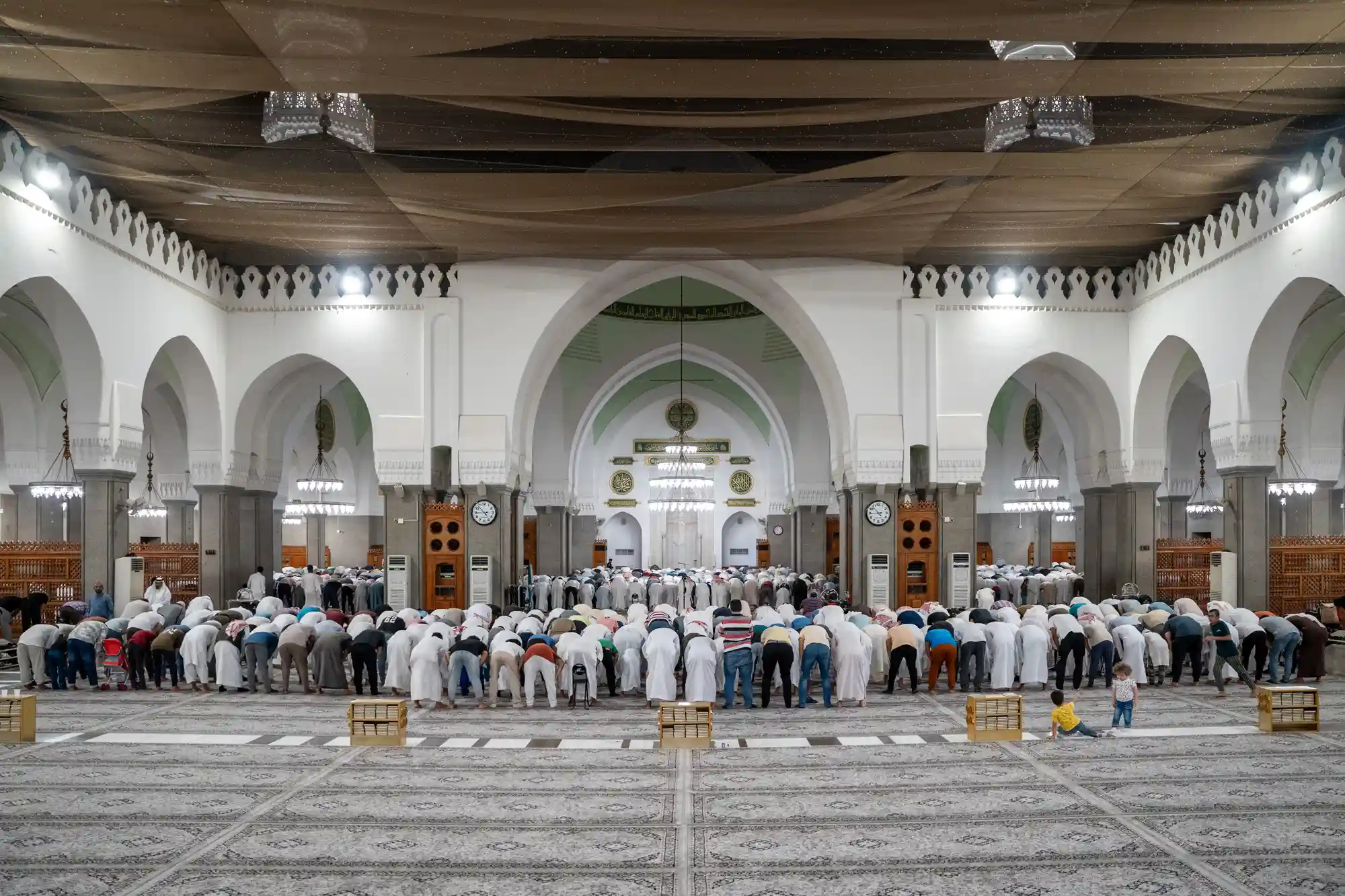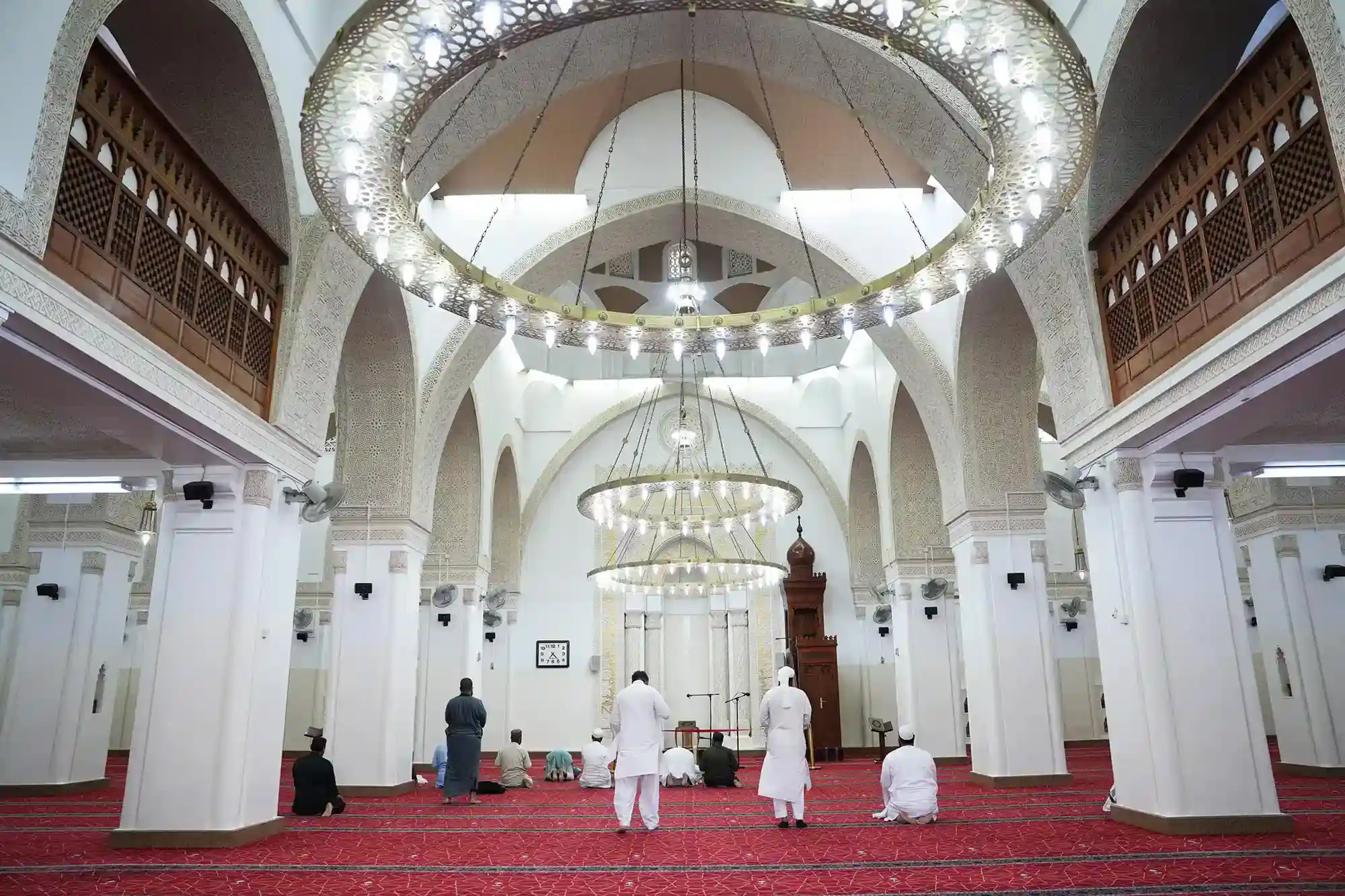This mosque is named after Omar Ibn Al-Khattab, the Emir of the Believers (may Allah be pleased with him.) According to historical sources, this mosque was constructed after 850 AH. It is also reported that the mosque was built on the site where the Prophet (PBUH) performed Eid prayer; Omar Ibn Al-Khattab also prayed there, which led to the Mosque being named after him. The current structure of the mosque dates back to the 13th century AH. During the reign of King Fahd bin Abdulaziz al-Saud, the Mosque was renovated in 1411 AH. During the reign of King Abdullah bin Abdulaziz, it was also renovated and maintained in 1434 AH. Finally, during the reign of King Salman bin Abdulaziz, the Mosque underwent maintenance as part of Madinah's mosques and historic sites care project.
A Landmark Traced Back to the Prophet:
The mosque is named after the second rightly guided caliph, Omar ibn Al-Khattab. It is one of the historical mosques in Al-Manakhah, which the Prophet, peace be upon him, used as a prayer ground for performing Eid and rain-invoking prayers. It is a historical landmark that attractsvisitors. It is about 133 meters from the Prophet's Mosque Courtyard and 133 meters from Al-Ghamamah Mosque.
Omar's Eid Prayer Ground:
Al-Manakhah was an empty space. So, the Prophet (ﷺ) used to offer Eid and rain-invoking prayer in various spots of this place. When Omar ibn Al-Khattab, may Allah be pleased with him, became caliph, he made one of those spots an Eid prayer ground, following the example of the Prophet (ﷺ). This specific spot was named after Omar. When mosques were built on historical sites during the Umayyad and subsequent eras, a mosque was built on that spot, and was named after Omar, may Allah be pleased with him.
History:
This mosque received great attention from the governors of Madinah and underwent many repairs and restorations, the last of which was in 1266AH. In the Saudi era, it has been restored more than once, while preserving its architectural style. During the reign of King Salman ibn Abdulaziz, it received more attention as it was listed in the Historical Islamic Sites Development and Rehabilitation Project.
Architecture and Design:
The Mosque consists of an open entrance and a prayer hall. The unroofed entrance is about 10 meters long, and is as wideas the mosque.
The prayer hall is square in shape, built of basalt stones. From the inside, it has a white coating and is painted with lime. A large dome covers the whole mosque proper. At the top of the interior cavity, there are color decorations with a strip of Quranic verses in the middle. The dome is about 12 meters high. The mihrab is in the middle of the southern wall. The mosquehas no pulpit.
The mosque has a 15-meter-long minaret, topped by a balcony. The design of the outer surface of the dome is similar to that of Abu Bakr Al-Siddiq Mosque.
Visiting Times:
Visitors can view the mosque from the outside.


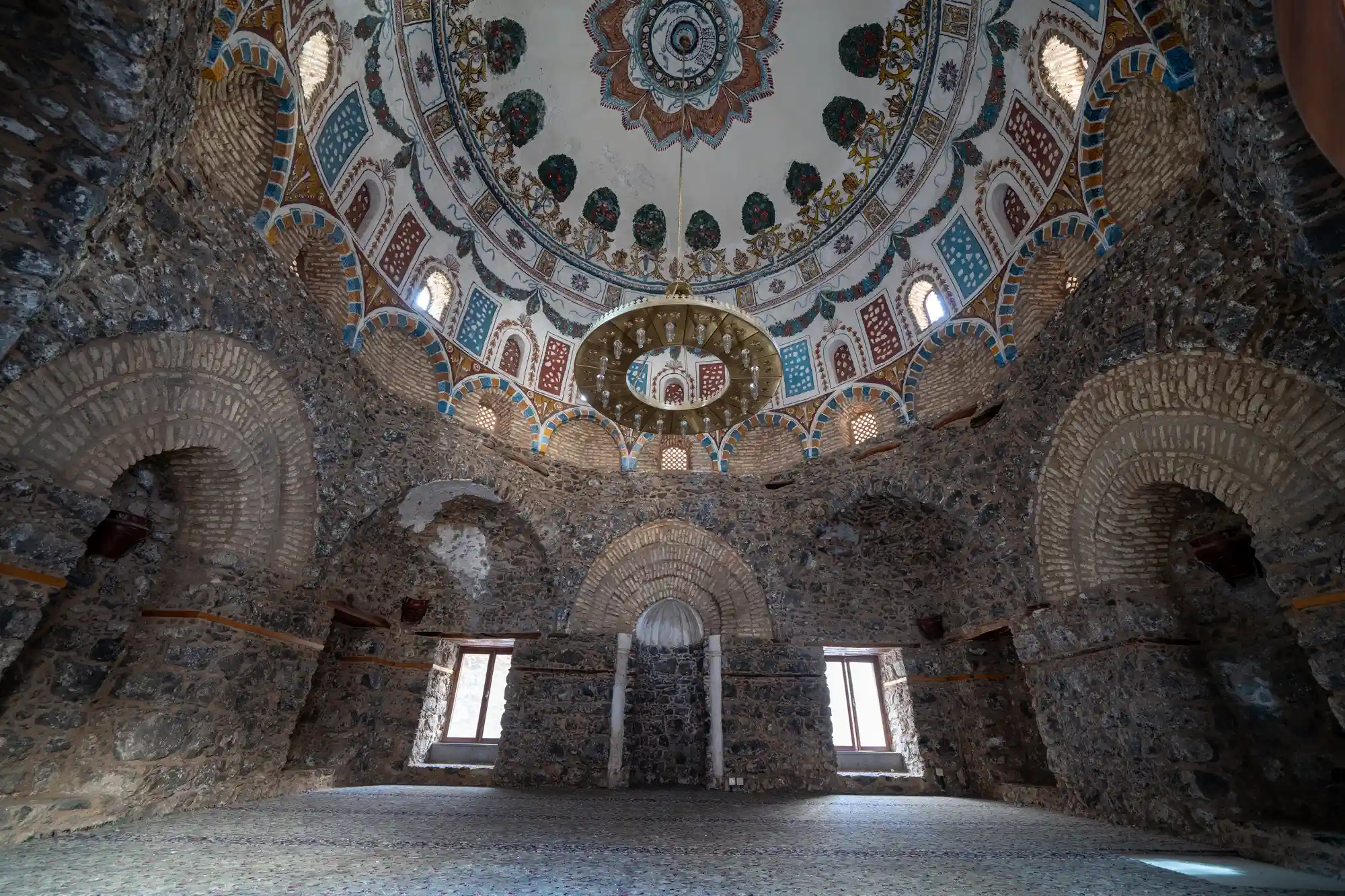
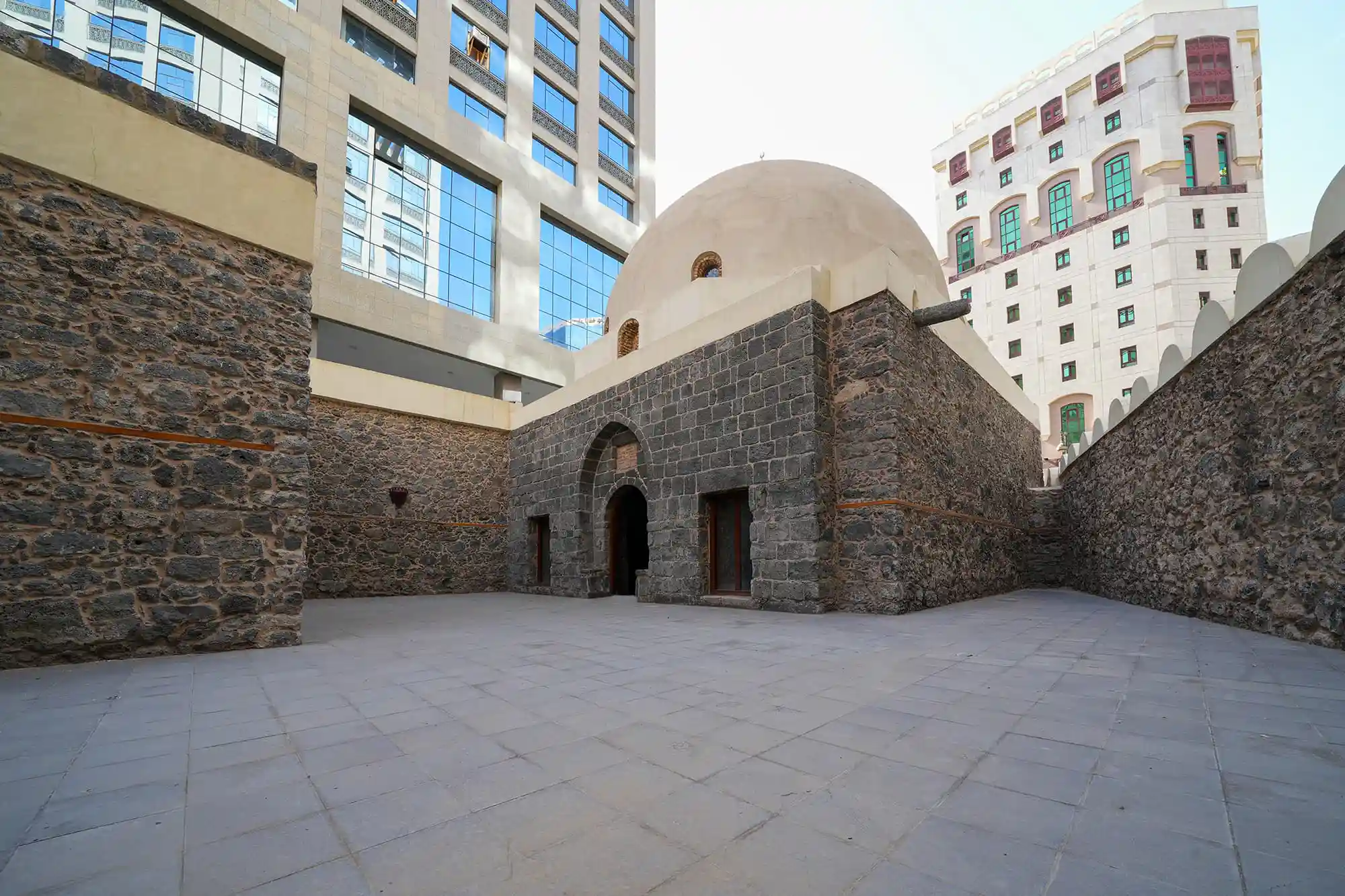
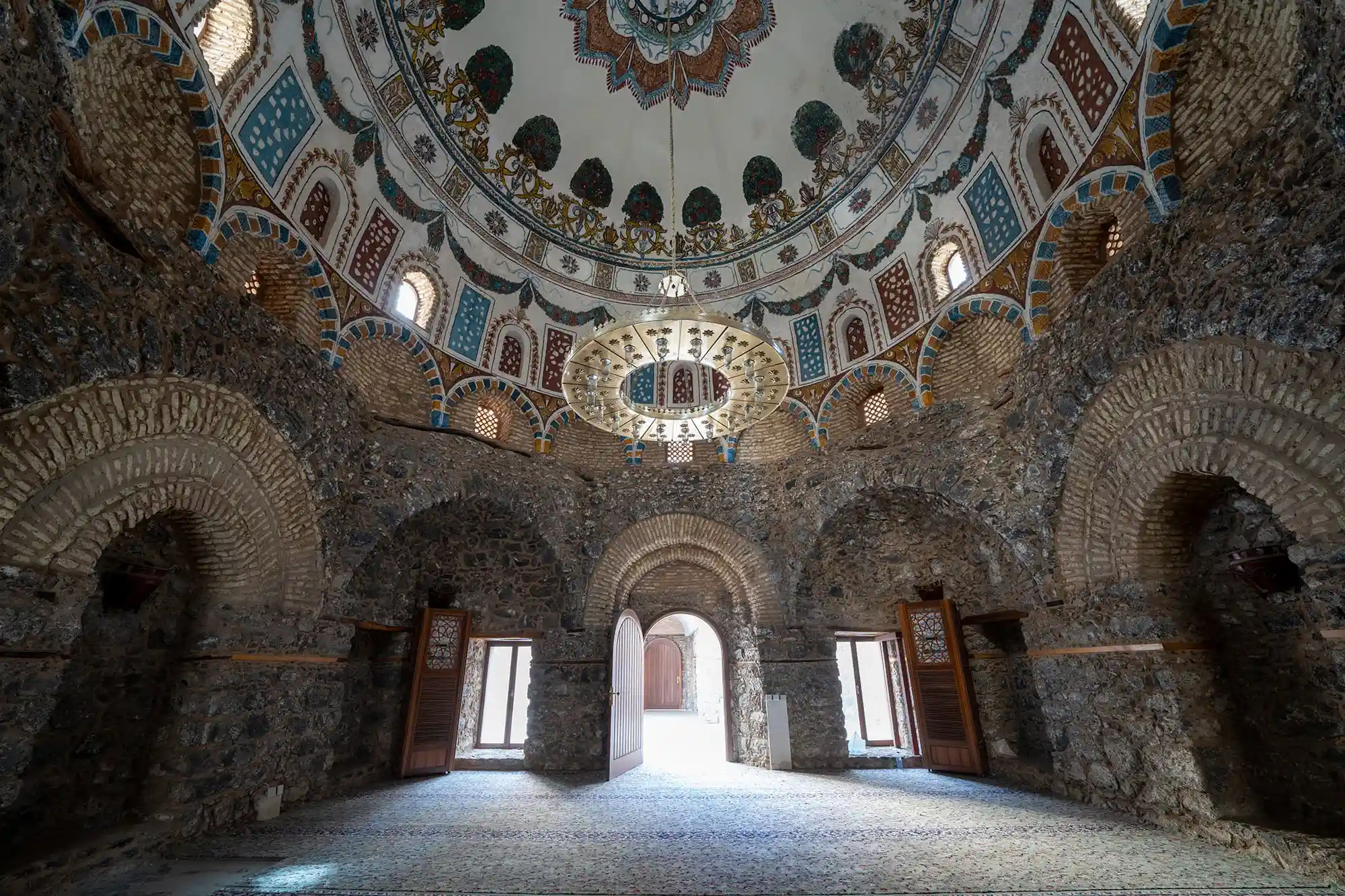
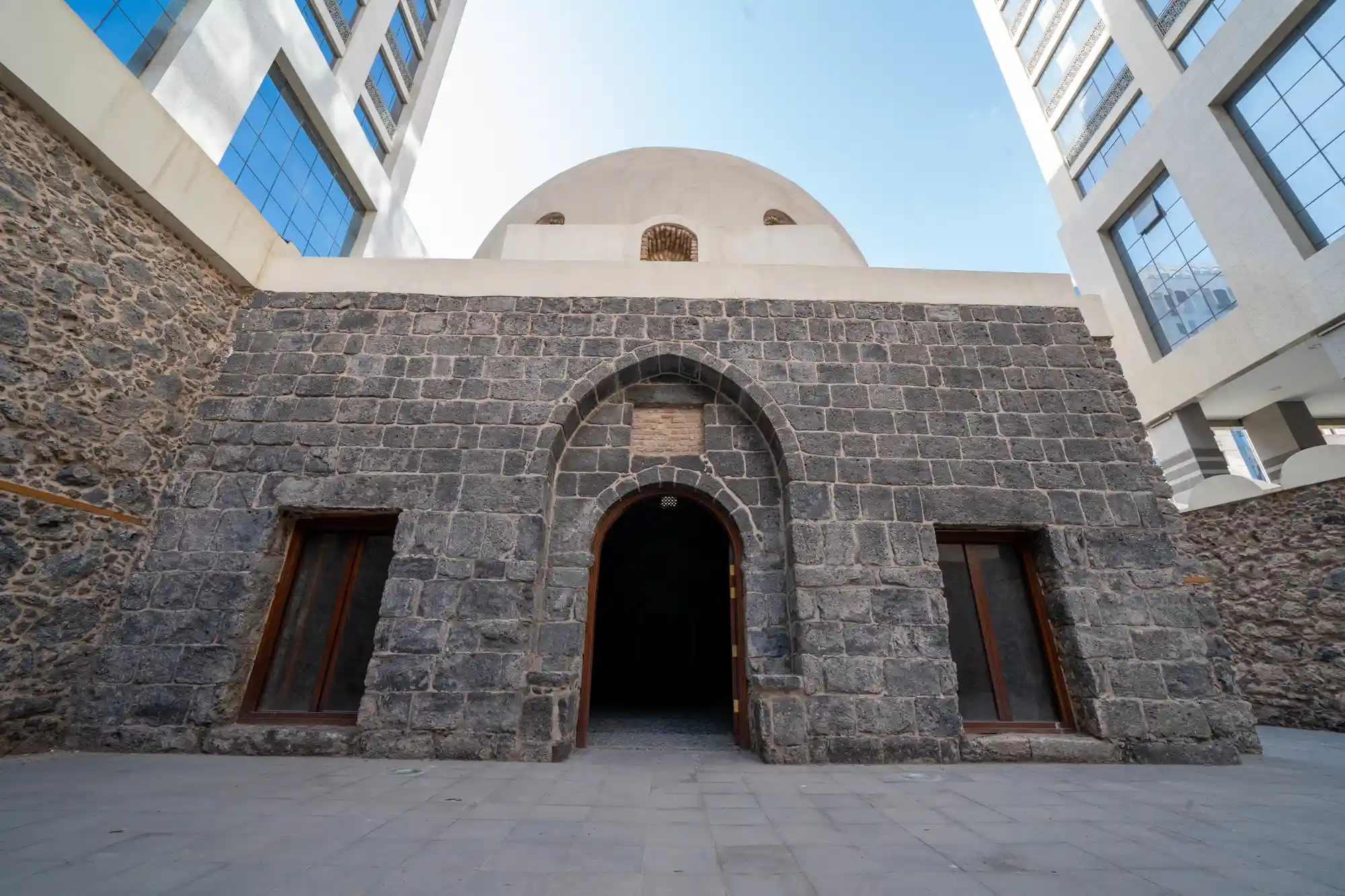
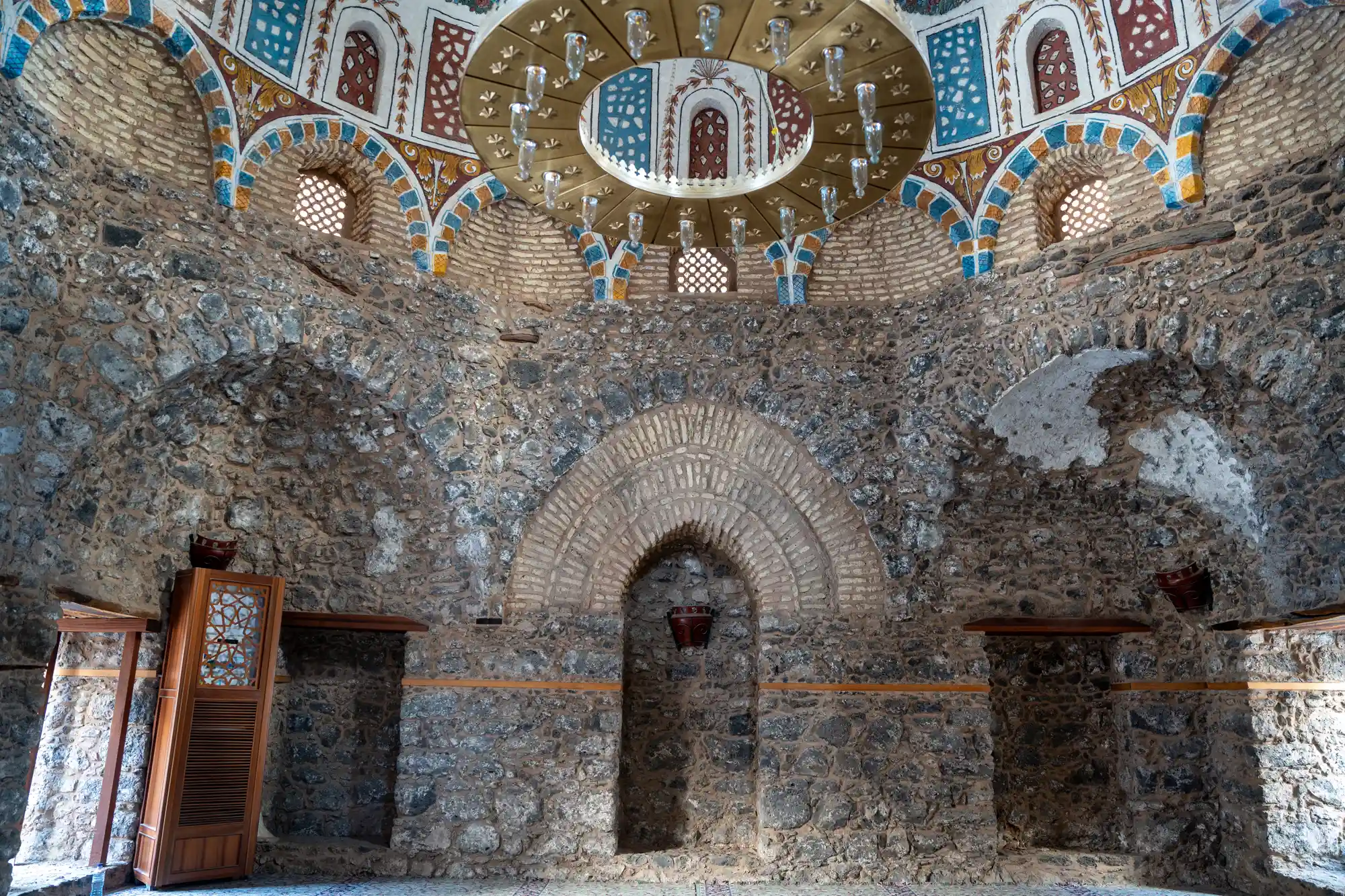
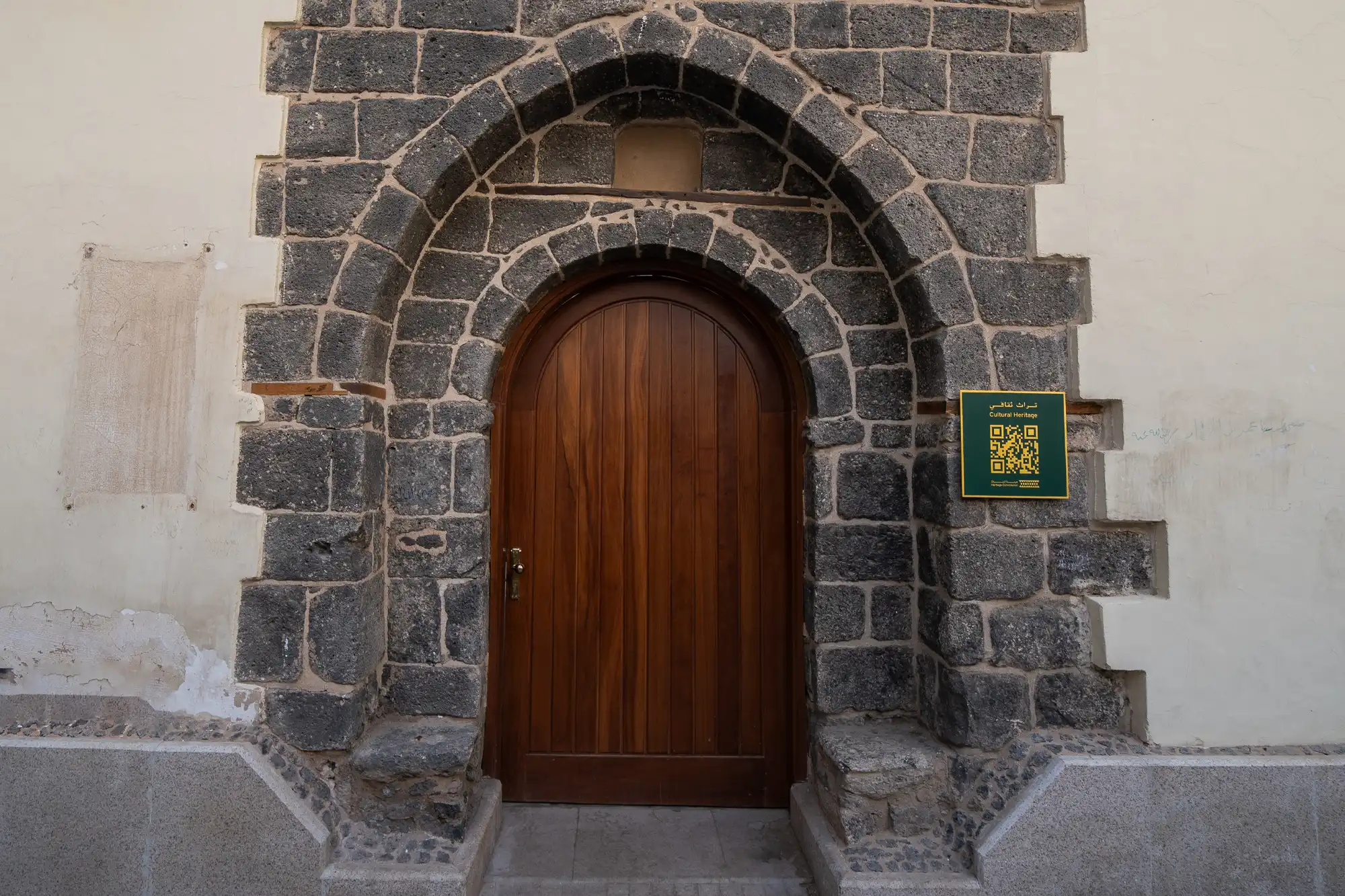
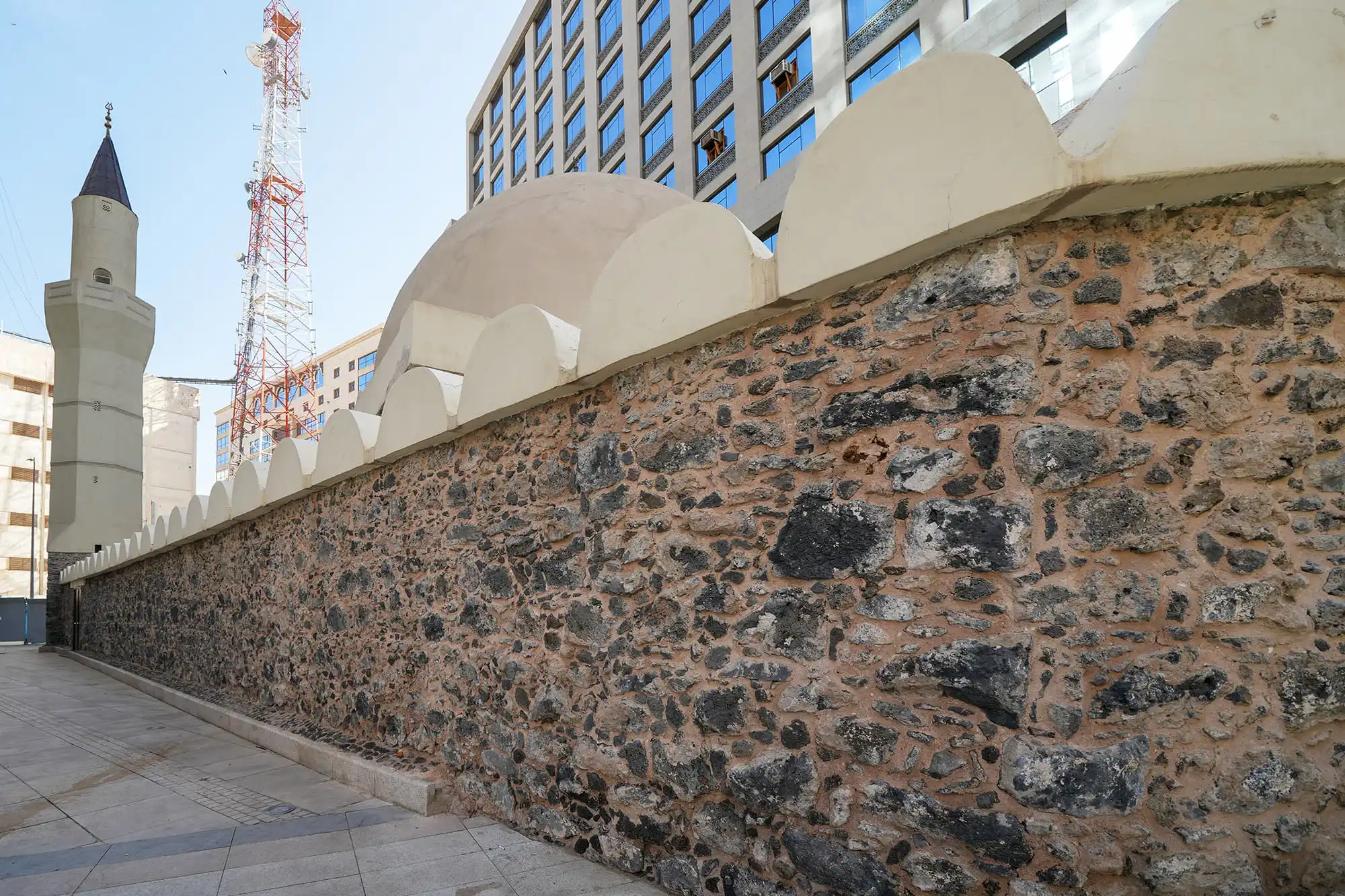


 Available
Available
 External
External
 Closed
Closed

